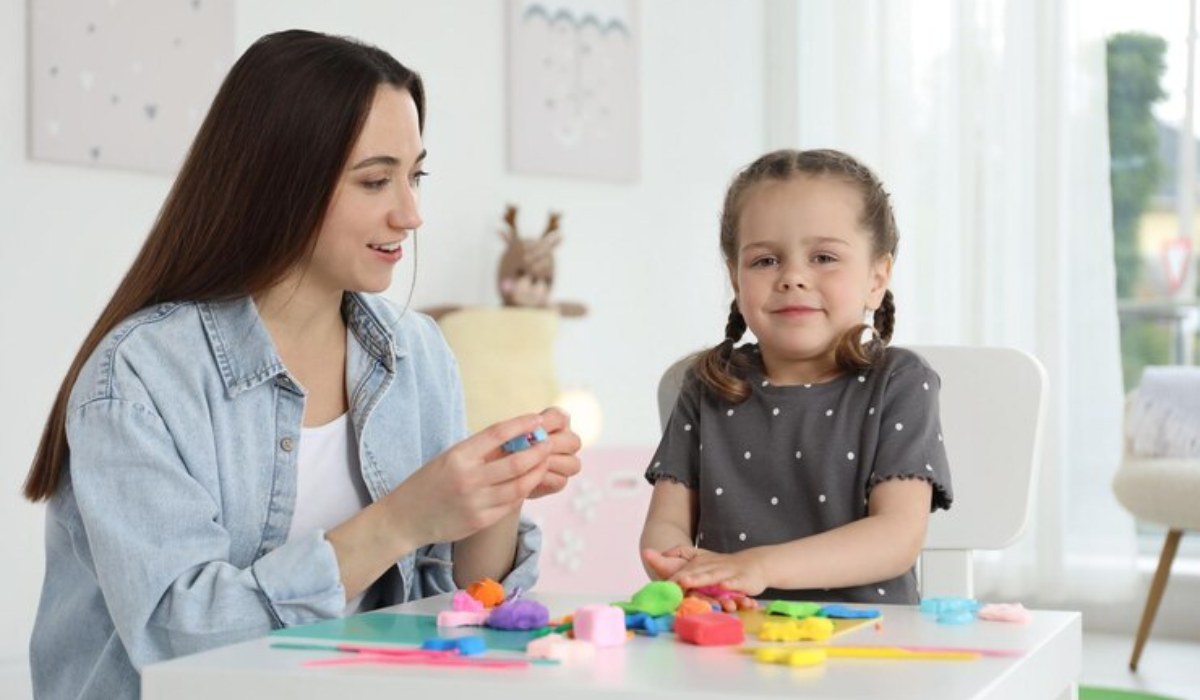Restitutional Overcorrection: How It Improves Behavior in ABA

It can be difficult to support a kid with autism in learning limits and proper reactions, particularly when dealing with behavioral issues. However, what if there was a method that taught a better way to do something instead of simply saying "no" to undesirable behavior? That’s exactly where restitutional overcorrection comes in.
This ABA (Applied Behavior Analysis) method focuses on accountability, responsibility, and development rather than just punishment. How does it operate, then? And why does it work so well?
Let’s walk through it together, like a friend would.
What Is Restitutional Overcorrection?
At its core, restitutional overcorrection is a behavior intervention that requires a child to not only correct a misbehavior but also improve the environment beyond its original state. Consider it a combination of skill development and natural consequences.
For instance, they would arrange all of the chairs in the room nicely if a student flipped chairs during a tantrum rather than only putting that few back. The concept? They learn from it and make amends.
This approach is different from simply punishing behavior. It's action-based, educational, and, when used correctly, empowering.
Real-World Examples
Let’s make this real. Here are a few scenarios where restitutional overcorrection shines:
- A child throws a book on the library floor. They’re required to pick it up and organize all the books left on tables.
- A student draws on a wall. They clean the wall, and also help wipe down nearby surfaces.
- A teen breaks a pencil in frustration. They replace the pencil and tidy the entire supply drawer.
In every case, restitution is more than just cleaning up a mess but about fostering appropriate behavior and more so acknowledging the effects of one's activities.
How Is It Different From Other Overcorrection Types?

ABA therapy recognizes a few types of overcorrection. Here’s how restitutional overcorrection ABA stacks up:
- Positive Practice: The child practices the correct behavior repeatedly. If they run in the hallway, they might practice walking calmly several times.
- Negative Practice: An older, less common method. The child repeats the undesirable behavior (e.g., yelling), often with a statement that it’s wrong, this has fallen out of favor due to ethical concerns.
- Restitutional: The focus of this blog. The child makes amends and improves the environment.
Among these, restitutional overcorrection is often praised for teaching personal responsibility while promoting appropriate behavior through meaningful action.
Why Does It Work?
Great question. Here’s why restitutional overcorrection is so powerful:
- It fosters empathy
Youngsters are able to observe how their choices impact other people and their environment.
- It increases responsibility
They learn what they should do in a tangible, unforgettable way rather than being told what they shouldn't do.
- It promotes the recurrence of proper conduct
New habits are strengthened by repeating constructive behaviors. This supports strategies that skill acquisition goals are based on in many ABA programs.
- It taps into natural consequences
Cleaning up after throwing food? That feels real. It makes the connection between behavior and outcome clear.
Backed by Research and Experience
This isn’t just theory. A classic study by Foxx and Azrin compared restitution and positive practice procedures in children with persistent disruptive behaviors. The result? A mean decrease of 89% in inappropriate behaviors using restitutional overcorrection. And even better, children reported preferring overcorrection to harsher discipline.
In real-life foster care experiences, guardians have also seen success. For teens with histories of severe behavioral challenges, restitutional overcorrection helped reinforce limits while building trust. One teen, placed in a new home, began responding well to structured, consistent expectations rooted in restitution, eventually gaining the tools for independent living.
But Let’s Be Real: Are There Downsides?
Absolutely. Like any tool, restitutional overcorrection in ABA needs thoughtful use. Let's dissect it:
- Emotional reaction: It may seem like a punishment if it is not presented in a composed, encouraging manner. That might cause worry or dissatisfaction, particularly in younger children.
- Not a good fit for everyone: Some children might not respond well, especially those who have communication issues or have previously experienced trauma, and even more in certain circumstances, this strategy may be more harmful than helpful.
- It requires professional supervision: ABA therapists should constantly monitor the child's response because what suits one person might not suit another.
Continuous measurement is important because of this. Before, during, and after the intervention, we monitor any changes in behavior to enable us to determine what is working, what isn't, and what requires modification. After all, the objective is to assist, not to injure.
When Should You Use It?
Restitutional overcorrection is most effective when:
- The action entails causing environmental disruption or harm.
- The youngster is able to comprehend cause-and-effect connections.
- The goal is to promote responsibility, not shame.
For instance, functional communication training ABA might be a better choice if the root issue is that the child doesn’t know how to express needs. But when a child knows better and still acts out, restitution can help them do better next time.
Tips for Using It Right
Let’s keep this friendly and useful. If you’re part of a therapy team or a parent supporting ABA at home, here are a few do’s and don’ts:
✅ Do:
- Explain the why behind the overcorrection.
- Pair it with a calm, respectful tone and body language.
- Use it as a teaching moment, not a punishment.
❌ Don’t:
- Use overcorrection when a child is in distress or escalation.
- Rely on it as your only strategy.
- Use it without monitoring how the child responds emotionally and behaviorally.
Restitutional Overcorrection in the Bigger ABA Picture
Here’s the beauty of it: restitutional overcorrection doesn’t operate in a vacuum.
It complements other ABA methods like:
- Reinforcement systems (e.g., token boards)
- Visual schedules for clarity
- Skill acquisition programs that target daily living, social interaction, or emotional regulation
When used thoughtfully, restitutional overcorrection bridges immediate consequences with long-term growth. And isn’t that the point of therapy?
Quick Recap (No Bullet Overload! Just a Breather)
- Restitutional overcorrection = fixing the damage + doing extra to improve the situation.
- Works well with disruptive behaviors that affect the environment.
- Must be implemented by trained professionals with continuous behavior tracking.
- Promotes skill acquisition, responsibility, and long-term positive behavior.
- May not be right for everyone, but when it works, it really works.
If you’re part of a support system helping children thrive through ABA, this is one strategy worth mastering.
Final Thoughts: It’s About Teaching, Not Punishing
Let’s be real, no child (or adult) learns best through fear or shame. Discipline should guide, not create guilt.
When used with care, restitutional overcorrection ABA helps kids grow into respectful and responsible individuals. It shows them how to fix their actions and build better habits through simple, real-life tasks, not long talks.
What if each mistake became a chance to learn something new?
That’s what restitutional overcorrection can do. It turns tough moments into progress.
At Achieve Better ABA Therapy, we believe in gentle support that builds confidence step by step. Families in North Carolina, trust us to use strategies that are kind, clear, and effective.
Ready to help your child turn challenges into growth?
Let’s build a plan that meets them where they are. Contact Achieve Better ABA Therapy today. The first step toward lasting change starts with reaching out.
Similar articles
Contact us today to learn more.

.jpg)

.jpg)
.jpg)
.jpg)
.jpg)





